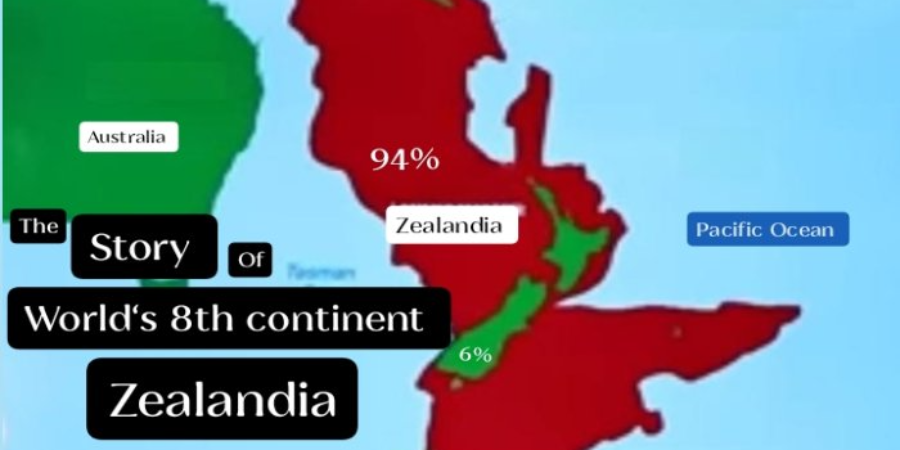

### The World's 8th Continent: Zealandia
#### Introduction
Zealandia, often referred to as the world's hidden 8th continent, lies in the southwest Pacific Ocean. This largely submerged landmass stretches over approximately 4.9 million square kilometers, with only about 6% of its area above sea level, primarily comprising New Zealand and New Caledonia. The concept of Zealandia as a distinct continent has intrigued and divided the scientific community, offering new perspectives on continental geology and Earth's history.
#### Geological Details
Geologically, Zealandia stands out due to its continental crust composition, which distinguishes it from the oceanic crust that forms the seafloor. This crust is thicker and less dense, similar to that of other continents. Zealandia was once part of the ancient supercontinent Gondwana, beginning to break away around 85 million years ago. Over millions of years, tectonic forces stretched and thinned Zealandia’s crust, causing it to sink, which led to its present submerged state. The region features varied geological formations, including sedimentary basins, ridges, and volcanic plateaus, indicative of its dynamic geological history.
#### Scientific Recognition
The formal proposal to recognize Zealandia as a continent gained significant momentum following a 2017 study by a team of geologists led by Nick Mortimer. The study argued that Zealandia meets the criteria for continent status, including a well-defined area, a crust thicker than the oceanic crust, distinct geology, and substantial elevation above the surrounding ocean floor. This perspective challenges traditional views on what constitutes a continent, emphasizing geological and structural criteria over the extent of the landmass above sea level.
#### Scientists' Thoughts
The scientific community remains divided on Zealandia's classification. Proponents argue that Zealandia's distinct geological characteristics and its historical role as part of Gondwana justify its recognition as a continent. This view expands our understanding of continental dynamics and redefines geological classification criteria.
Critics, however, highlight that traditional definitions of continents have relied on significant portions being above sea level, a criterion Zealandia largely fails to meet. They argue that recognizing Zealandia could necessitate reevaluating other submerged geological features. The debate underscores a broader conversation about how we define and understand the Earth's surface.
#### Resources and Research
Ongoing research is crucial in unraveling Zealandia's mysteries. The International Ocean Discovery Program (IODP) has conducted multiple expeditions to drill into Zealandia's crust, retrieving core samples and geological data. These efforts aim to clarify the processes of continental breakup, crustal thinning, and subsidence.
Advanced satellite imagery and seafloor mapping technologies have played vital roles in studying Zealandia. High-resolution maps have revealed detailed features, such as submerged ridges and volcanic structures, helping scientists reconstruct Zealandia's geological evolution.
#### Conclusion
Zealandia, whether formally recognized as Earth's 8th continent or not, provides invaluable insights into continental formation and the dynamic processes shaping our planet. The study of Zealandia pushes the boundaries of geological science, prompting reconsideration of continental definitions and enhancing our understanding of Earth's intricate geological history. As research progresses, Zealandia continues to fascinate scientists and the public alike, holding secrets that promise to deepen our knowledge of the Earth's crust and its developmental history.
